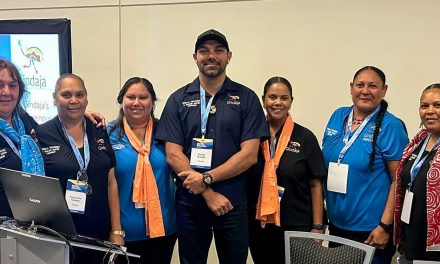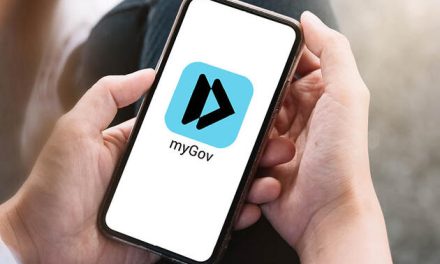The increasing numbers of Indigenous children in prison is alarming and demands urgent action, according to Queensland’s Family and Child Commission (QFCC) commissioner Natalie Lewis.
The Gamilaraay woman told National Indigenous Times youth justice and crime – which has created headlines in Queensland and seen vigilantes attempt to hurt Aboriginal children – needed to be understood in the context of Indigenous disadvantage and trauma.
“Aboriginal and Torres Strait Islander peoples face immense inequalities, including poverty, inadequate housing, racism, and limited access to critical services, which are known drivers of youth offending,” Ms Lewis said.
“Our system punishes vulnerability rather than addresses it, and compounds trauma rather than heals. This is largely because the support and intervention that would actually make a difference exist beyond the criminal justice system.”
The state has experienced a tumultuous 12-month period, with both youth justice and Indigenous rights becoming a political football, especially in the wake of the fractious Voice referendum.
Twice, the Labor government has breached the Human Rights Act: at the beginning of 2022, Newman-era legislation was introduced to make breach of bail an offence for children; and in August, legislation was implemented to allow children to be imprisoned in adult police watchhouses. Both decisions were highly criticised; Justice Reform Initiative executive director Mindy Sotiri said Queensland political leaders were “on a race to the bottom,” while Sisters Inside chief executive Debbie Kilroy argued there was “zero evidence to support their introduction.”
Queensland’s Human Rights Commissioner Scott McDougall was also adamant these legislative moves would fail, saying at the time: “the measures introduced are predicated on a flawed perception that recidivist children will respond positively to punitive measures.”
Ms Lewis argued the move to incarcerate children was destined to fail. “Detention has been proven to have harmful impacts on children and young people,” she said.
“Any system that focuses on punitive rather than preventative measures is going to increase the number of children in detention. It perpetuates inequalities, including lack of consistent access to quality health, education and therapeutic programs, and can continue the cycle of intergenerational trauma.”
Queensland has the highest rate of youth detention in the nation, with Indigenous children 21.3 times more likely to be in the youth justice system than non-Indigenous children and represent 65 per cent of all children and young people in youth detention, despite making up only 8.8 per cent of the youth population
Despite a pillar of the state’s youth justice policy being that the state should be “reducing the number of children on remand in detention,” as well as keeping children out of custody entirely, the police minister Mark Ryan has repeatedly made statements that seemingly go against this.
“As a result of our strong laws, more young offenders are in custody for longer periods of time and this is impacting youth detention capacity,” he said in August.
Ms Lewis said this overrepresentation was both “alarming” and “demands urgent action.”
“To reduce youth offending, we need to address these underlying causes, involving greater effort to reduce inequity, with solutions developed and led by First Nations communities and organisations.”
The commissioner said there was significant sympathy for the community who suffered from crime, however incarceration for children was simply not the answer. Many Indigenous children suffer from trauma and family violence, as well as mental and physical disabilities.
Furthermore, experts who have spoken to National Indigenous Times argue community safety would only be put further at risk by children who are incarcerated at a young age, instead recommending diversion and social programs for youth’s involved in the justice system.
“Our system punishes vulnerability rather than addresses it, and compounds trauma rather than heals,” Ms Lewis said.
“This is largely because the support and intervention that would actually make a difference exist beyond the criminal justice system.”
She previously told Guardian Australia: “I am not advocating that a ‘free pass’ be given but that help is given in equal measure to support young people in trouble to change course.”
“To recognise they are children and that their current circumstances do not allow us to opt out from upholding our values nor from upholding their rights.”
National Indigenous Times previously reported children were pleading guilty to crimes they didn’t commit in order to avoid spending time in detention; whilst a report from the QFCC last month found children were routinely being denied bail due to circumstances outside of their control, such as family violence or a lack of parental supervision.
Political inputs
The Voice referendum defeat – which saw less than 32 per cent of Queensland vote yes – has resulted in a political rhetoric seemingly intent of continually sidelining both Indigenous voices, as well as experts pushing for less children in prison.
In the wake of the referendum, Liberal National Party leader David Crisafulli withdrew bipartisan support for Treaty and truth-telling, arguing it would “only create further division.” This despite Indigenous groups arguing Treaty, as well as Indigenous led responses, are the most effective way to manage laws that directly impact First Nations people.
The QFCC have said they continually provide evidence and advice to all MPs and Parliamentary committees, including the bipartisan Youth Justice Reform Select Committee. Nevertheless, this input – along with evidence from Indigenous, legal and human rights groups – hasn’t appeared to influence a reduction in youth incarceration.
Rather, conversations on both sides of the political aisle seem only to urge an exacerbation of juvenile’s spending time in prison. Last month, Mr Crisafulli argued for a strengthening of the Youth Justice Act, calling for “restoring consequence for action.”

Worryingly, youth crime, which has risen steadily but is still 30 per cent less than in 2001, has also seen alleged vigilante action taken against Indigenous children. On the last point, Ms Lewis was adamant: “The threat against any child is absolutely unacceptable.”
“This behaviour or threats of such action should be denounced, without reservation, and perpetrators policed with the same level of determination and urgency that our children are,” she said.
Worse still, this isn’t the first example of violent threats against young, Aboriginal children. Last year, a mob of 30 people in Rockhampton surrounded a home after a series of hostile and racially charged comments online were directed at two Aboriginal young people believed to be living in the residence.
Former One Nation candidate Torin O’Brien posted the names and photographs of the two young people on Facebook, suggesting they were responsible for some recent criminal activity and encouraging people to pay the children a visit.
National Indigenous Times has seen a series of racial slurs on social media in reference to youth crime in North Queensland; calling for vigilante action, along with criticism of police and judges for being allegedly “soft” on crime.
“If community members are concerned about the behaviour of young people, I would like to see them channel those concerns into positive, supportive action that makes a meaningful difference for children and young people,” Ms Lewis said.
It remains to be seen whether the calls to address youth incarceration will be heeded. Polls show the LNP are favourites to win this year’s election and have expelled significant political capital on further youth justice crackdowns. Furthermore, Labor has consistently argued their youth justice laws are the “toughest” in the country.
QFCC principal commissioner Luke Twyford said in December: “There is broad consensus within government, the community, the judiciary, police and frontline workers that watch houses are not suitable places to hold children, yet I am seeing little improvement.”
Ms Lewis says a full government response, across multiple ministries, is needed to address significant issues, including: the rising numbers of incarcerated youths, disadvantage, poverty and prison overcrowding.
“Redressing the inequities and the under-representation of First Nations children in terms of enjoyment of basic human rights requires urgent action across portfolios… by engaging with children, families and communities to develop and deliver solutions that keep children and their communities safe.”
This article was originally published in the National Indigenous Times and written by Dechlan Brennan. To view the original article, click here.











